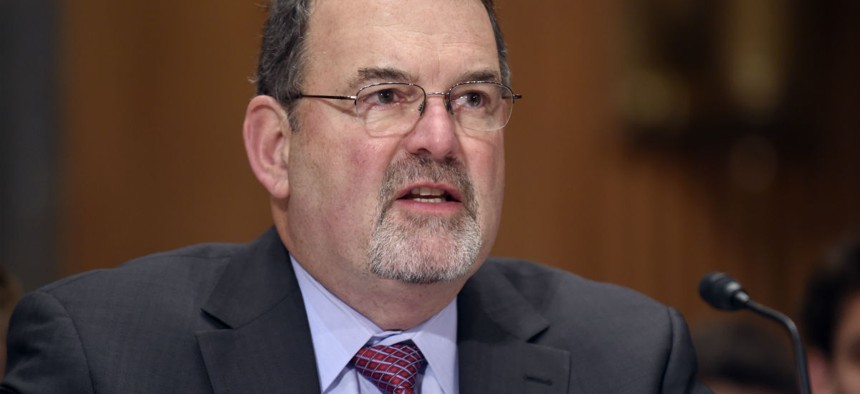Federal CIO: Cybersecurity Policies Lacked ‘Urgency’ Before OPM Hack

Federal CIO Tony Scott Susan Walsh/AP
But it wasn't because there was a shortage of guidance, strategies and memos issued by the OMB.
Shortly after Tony Scott became the federal government’s chief information officer in February, some of the Obama administration’s keystone tech policies -- including cybersecurity and cloud computing -- “felt like they were languishing a little bit and maybe had lost a sense of urgency,” the former corporate IT executive says.
There had been no shortage of guidance, strategies and memos issued by the Office of Management and Budget.
But particularly with cybersecurity, “What we didn't have was, I think, any kind of good cadence and sort of sense of urgency about that,” Scott said Wednesday during a presentation at the Digital Government Institute’s 930Gov conference. “And so, even prior to OPM, I was thinking about: What are the things that we could do to sort of accelerate our progress on this?"
Scott is referring, of course, to the devastating data breach at the Office of Personnel Management, in which personal information culled from background investigation files of more than 21 million federal employees and contractors was stolen by hackers purportedly as part of a Chinese espionage operation.
Following the breach, Scott’s office ordered a “30-day cybersecurity sprint,” directing agencies to take immediate steps to plug security gaps, an effort that has boosted the use of more secure log-in methods and faster patching of critical vulnerabilities, according to the White House.
“There's nothing like a crisis to sort of get the juices going and get people motivated,” Scott said. “I'm really proud of the work that the teams have done. I wish we had done it sooner, but you know at this point, we're working as hard as we can on it."
Coming up next is a full-scale federal civilian cybersecurity strategy to further institutionalize the lessons learned from the OPM breach.
But what’s to stop this latest strategy from eventually gathering dust when the spotlight fades and outraged lawmakers’ attention wanders elsewhere?
For one, Scott says his team will continue to hold agencies’ feet to the fire to ensure further progress on locking down agency networks.
Already, agencies have seen successes in the short-term because of the sprint, Scott said.
Overall, the percentage of federal employees required to use a smart card in addition to a password to log on to federal computer networks increased from about 42 percent to more than 72 percent during the time period, according to OMB. Two-factor authentication stats were even higher for privileged users -- those with expanded access to federal networks -- growing from 33 percent to nearly 75 percent.
"This is probably one of the most significant things that you can do to enhance cybersecurity no matter where you are,” Scott said of efforts to increase the use of two-factor authentication, adding, “We're going to stay on that one like crazy.”
OMB also directed agencies to review their high-value assets to make sure protections in place are adequate. That review is ongoing, Scott said.
In addition, OMB will hold face-to-face CyberStat sessions with agency leaders to inspect their progress, Scott said.
Some of the action items on Scott’s agenda are clearly long term.
Scott also said his office will produce a high-level assessment of talent and skills gaps in the federal government this fall as part of a broader focus on the IT workforce.
"I can tell you cyber is one of those areas already,” he said. “This should be no surprise to anybody … This is not saying anything at all about their skill. The sheer number of people we have probably isn't sufficient to meet the demand today."





